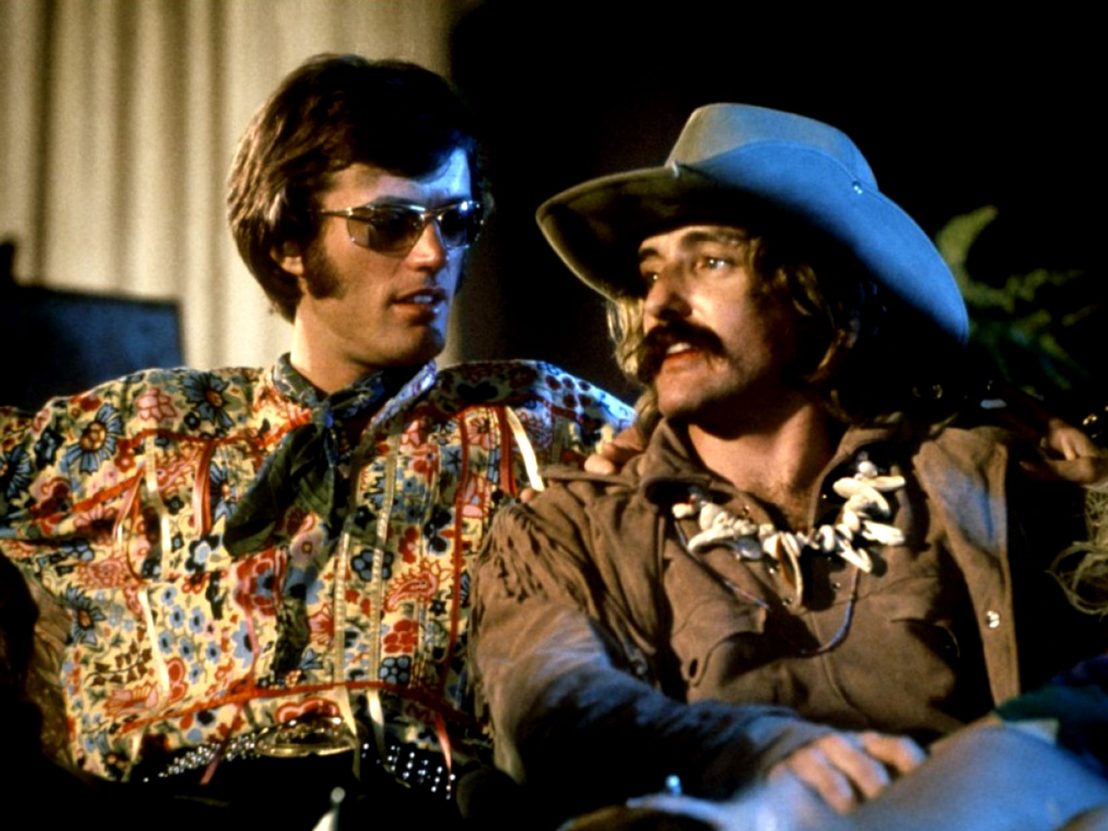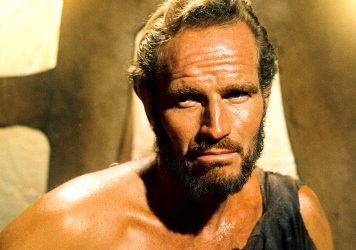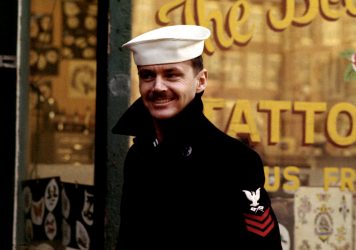
It was in September 1967, during the publicity tour of The Trip in Toronto, that Peter Fonda first encountered Jack Valenti, the President of MPAA. “It’s time we stop making movies about motorcycles, sex and drugs,” said Valenti. “We need to make more movies like Dr Doolittle!” Having experienced success with low-budget biker movie The Wild Angels, which earned $16 million, Valenti’s comments infuriated Fonda. He didn’t believe that Doris Day’s Pillow Talk reflected a society marred by civil unrest, political assassinations, segregation, recreational drugs and sexual permissiveness.
Securing a budget of $400,000, Fonda decided to produce a new type of road movie. “Easy Rider is a term for a whore’s old man; not a pimp, but a dude who lives with a chick,” he explained. “Well, that’s what happened to America – Liberty became a whore and the whole country took an easy ride.”
Adopting the style of a John Ford western, Easy Rider charts the (mis)adventures of two outlaws riding roughshod across the vast tracks and terrain of the US in their quest for a quick profit and spiritual enlightenment. Fonda’s Wyatt, is the mellow ‘Captain America’, resplendent in tight black leather with the American flag emblazoned upon his jacket, helmet and Harley Davidson. Riding in tandem is Dennis Hopper, (his co-star from The Trip), as the buckskinned Billy (The Kid); a paranoid, long-haired cowboy.
Introduced to the strains of Steppenwolf’s psychedelic rock anthem ‘Born to Be Wild’, the two renegades mount chopper bikes, speeding over the winding bridges and highways of Mexico en route to scoring drugs. Having successfully acquired their contraband, they travel to LA and sell their stash for a hefty profit, then, head out West for adventure towards the East Coast.
On the way to Miami they encounter the culture clash of a divided America. First they stumble upon a ‘Switch-off, Tune-in and Drop-out’ hippie commune, then a native American reservation, before gatecrashing the annual Mardi Gras parade. Arrested and jailed for parading without a permit, they fester behind bars of the county jailhouse, where they meet alcoholic ACLU lawyer & UFO nerd George Hanson (Jack Nicholson), whom they recognise as a fellow bohemian drop-out and someone who can secure their bail.

Now a trio, they visit a small-town diner where the local rednecks take an instant dislike to these representatives of the counterculture. Resented, abused and insulted for their apparent defiance as ‘non-conformists’ and therefore, the enemy, the three beat a hasty retreat, only to be pursued and attacked where Hanson is beaten to death. Hooking up with two prostitutes Karen (Karen Black) and Mary (Toni Basil) in a whorehouse in the French Quarter of New Orleans, they revisit the mardi gras parade, experiencing a hallucinogenic breakdown under the influence of LSD.
Fonda, as producer and co-writer, picked Hopper to director the project because, “He had the passion… the ability to see form and substance much better than I. He understood framing.” Shooting commenced on 23 February, 1968, with Terry Southern assigned to write the treatments. Preferring to work with natural light, Hopper was granted $20,000 to shoot parts of New Orleans with 16mm Bolex cameras, hidden in Fonda’s bags.
The cast ad libbed and improvised at length using marijuana and LSD, with Hopper forcing a reluctant (and stoned) Fonda to channel his grief about the loss of his mother (to suicide) at the age of 10 at the statue of Madonna during their psychedelic trip. Hopper also insisted in using locals over actors to build tension and authenticity to the scenes in the deep south diner where the doomed men’s attempted humour and friendly banter with the local girls backfire, leading to Billy and Wyatt’s untimely death, brutally blown away and discarded on a lonely stretch of highway by two random rednecks.
Actor Rip Torn, had been earmarked by Southern instead of Nicholson for the part of Hanson. Hopper claimed on The Tonight Show with Jay Leno that Torn pulled a knife out on him during a heated argument at a dinner party, which resulted in his early dismissal. Torn countersued, arguing that it was Hopper that pulled a knife out on him, making racist generalisations about Texans. Torn won almost $1 million in damages for defamation of character and loss of earnings.
The film was released on 14 July, 1969, after Hopper took a year to edit some 80 hours of footage. He was subsequently awarded the First Film Award at the Cannes Film Festival for his efforts. Easy Rider’s subliminal message is that humanity’s only salvation and release is through death. America is self destructing, and any attempts to find freedom, truth, unity and democracy are futile under the burning American flag and the ghostly spectre of the Vietnam War.
Published 14 Jul 2019

A previously lost film provides a fascinating insight into the actor’s unorthodox creative process.

Franklin J Schaffner’s satire was a response to an era of social upheaval.

By Anton Bitel
The actor delivers arguably his finest hour in Hal Ashby’s The Last Detail.